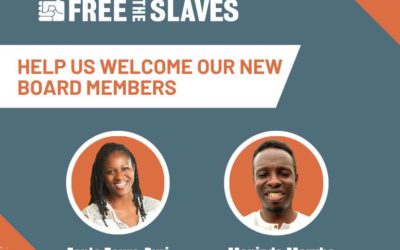Ghana is the 10th biggest producer of gold in the world. A 2003 report found that the exportation of gold garners “approximately 50%” of the country’s GDP. But much of the mining industry is made up of “galamsey” operators—artisanal miners who often operate in unregulated, illegal mines. It is estimated that between 30,000 and 50,000 people work as galamsey operators. And of these, 10,000 are children who are forced to work in hazardous conditions. Slavery in the form of debt bondage and forced prostitution also occur in these communities.
In these unregulated, small-scale mines, fatal accidents occur with alarming regularity. In 2009 a landslide at a galamsey site killed about 20 miners—14 of whom were women. Last April, 10 galamsey operators were buried alive when the gold mine they were working in caved in. Exposure to mercury and other toxic chemicals threaten the miners’ health. Pollution and deforestation damage the environment.
For all the dangers, illegal mining is a source of valuable income for these communities. Many can find no alternative livelihood. But in 2009, Free the Slaves began a partnership with Ghanaian human rights NGO Social Support Foundation to launch a program to combat slavery in Ghana’s illegal mining communities. The project, titled Community Resistance to Slavery and Forced Labor (CRSFL), helps vulnerable communities to organize and create community-based action plans to eradicate slavery.
One SSF report describes the sense of empowerment gained by communities engaged in the CRSFL project:
“Prior to SSF’s engagement, most galamsey people had little or no self-esteem and confidence. They seem[ed] to feel and believe that there is nothing they can achieve and no one regards/respects them. But this perception is changing very fast. This is helping them to understand the issue of slavery and debt-bondage as well as the issue of children in mining and the fact that it is illegal and not good for them.”
The CRSFL project helps miners find alternative sources of revenue—and to ultimately “engender a collective rejection of all forms of slavery in the mining industry.” To do this, the root causes of slavery are addressed. This goes beyond the initial rescues. Miners get access to financial assistance to help them become economically self-sufficient. They are empowered to organize together to obtain mining permits, so they can operate above the law—and away from the control of slaveholders. Communities are brought together to organize their own anti-trafficking task forces. Social and psychological support helps survivors heal. And, training is provided to law enforcement, media and local government agencies to educate them about anti-slavery laws and best practices for combatting it.
The CRSFL project recently helped launch a task force to protect children from slavery in two areas of the Ashanti region. The task force is made up of 35 members, all galamsey operators themselves—and all democratically elected. Before joining the task force, some members used child labor as part of their mining work. But, a recent SSF report finds, “now they have decided to set a good example by letting the children… leave the sites and go back to school and are encouraging other galamsey people to desist from the use of children in mining and all other hazardous work.” The task force stays vigilant. When they suspect a case of child trafficking, they report it immediately to the SSF.
Your donations help Free the Slaves continue our work around the world. Find out more about our programs and donate today!



